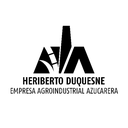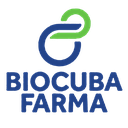Executive Secretary

VIII Simposio Internacional de Química y Ciencias Farmacéuticas
SIIQ
XIII Conferencia "La Ingeniería Química: Desarrollo, potencialidades y sus retos"
Resumen
En el trabajo se analizó el proceso de obtención de alcohol extrafino en la destilería “Heriberto Duquesne” para optimizarlo, disminuir los costos totales de producción y así aumentar la ganancia (Y). Para evaluar el comportamiento de esta última se realizó un diseño experimental factorial multinivel del tipo 23 mediante el empleo del software Statgraphics Centurion XV 15.1.0.2. Para el análisis se tomaron las tres variables independientes siguientes: la utilización del jugo de los filtros en la etapa de fermentación (X1) que depende a su vez, de la cantidad de miel (X1 miel) y de la cantidad de agua (X1 agua) consumidas; la segunda variable propuesta fue el precio de la miel (X2) y por último el índice de consumo de agua de enfriamiento (X3). Según los resultados obtenidos que se evidencian el Diagrama de Pareto y en el Gráfico de efectos principales, la variable más significativa es el precio de la miel en su nivel inferior, seguido del empleo del jugo de los filtros en la fermentación. Mediante el estudio de regresión se obtuvo el modelo estadístico que se ajusta a los datos y cada uno de sus coeficientes, con un valor de R2 igual a 99,35 %. La optimización de este, dio como resultado un valor óptimo para la ganancia de 15 994 200 $/año y la siguiente combinación de los niveles óptimos de las variables analizadas: el empleo del jugo de los filtros, el menor precio de miel y el menor índice de consumo del agua de enfriamiento.
Abstract
In this work, the process of obtaining extrafine alcohol at the “Heriberto Duquesne” distillery was analyzed to optimize it, reduce total production costs and thus increase profit (Y). To evaluate the behavior of the latter, a multilevel factorial experimental design of type 23 was carried out using Statgraphics Centurion XV 15.1.0.2 software. The following three independent variables were used for the analysis: the use of juice from the filters in the fermentation stage (X1), which in turn depends on the amount of molasses (X1 molasses) and the amount of water (X1 water) consumed; the second variable proposed was the price of molasses (X2) and finally the rate of consumption of cooling water (X3). According to the results obtained, which are shown in the Pareto Diagram and in the Main Effects Chart, the most significant variable is the price of molasses at the lowest level, followed by the use of the juice from the filters in fermentation. By means of the regression study, the statistical model that fits the data and each of its coefficients was obtained, with an R2 value equal to 99.35 %. The optimization of this model resulted in an optimum value for the profit of 15,994,200 $/year and the following combination of the optimum levels of the variables analyzed: the use of the juice from the filters, the lowest price of molasses and the lowest consumption rate of cooling water.
Sobre el ponente

Yailet Albernas Carvajal

Jefa de la Comisión I: XIV Conferencia "La Ingeniería Química: Desarrollo, potencialidades y sus retos" y VI Simposio Internacional de "Seguridad Tecnológica y Ambiental", dentro del IX Simposio Internacional de Química y Ciencias Farmacéuticas (SIQF2025).
Editora de la Revista "Centro Azúcar".
Discussion




